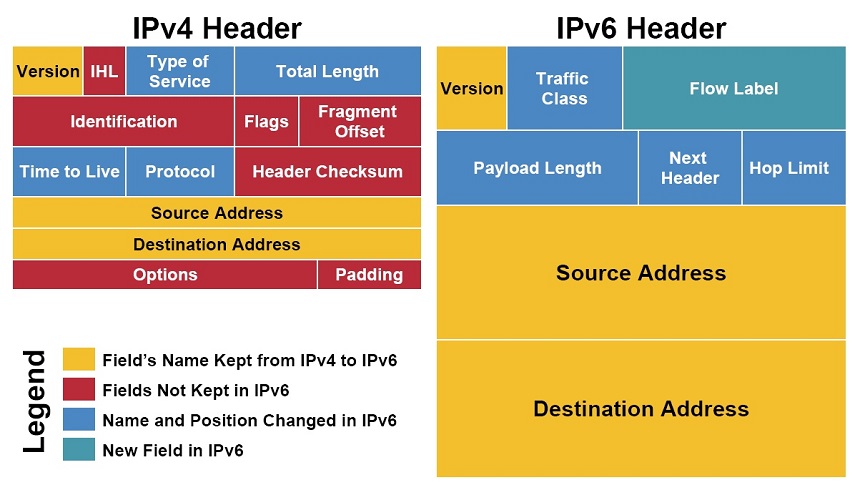Internet Protocol version 6 (IPv6) is the most recent version of the Internet Protocol (IP), the communications protocol that provides an identification and location system for computers on networks and routes traffic across the Internet. IPv6 was developed by the Internet Engineering Task Force (IETF) to deal with the long-anticipated problem of IPv4 address exhaustion. IPv6 is intended to replace IPv4.
Every device on the Internet is assigned a unique IP address for identification and location definition. With the rapid growth of the Internet after commercialization in the 1990s, it became evident that far more addresses would be needed to connect devices than the IPv4 address space had available. By 1998, the Internet Engineering Task Force (IETF) had formalized the successor protocol. IPv6 uses a 128-bit address, theoretically allowing 2128, or approximately 3.4×1038 addresses. The actual number is slightly smaller, as multiple ranges are reserved for special use or completely excluded from use. The total number of possible IPv6 addresses is more than 7.9×1028 times as many as IPv4, which uses 32-bit addresses and provides approximately 4.3 billion addresses. The two protocols are not designed to be interoperable, complicating the transition to IPv6. However, several IPv6 transition mechanisms have been devised to permit communication between IPv4 and IPv6 hosts.
IPv6 provides other technical benefits in addition to a larger addressing space. In particular, it permits hierarchical address allocation methods that facilitate route aggregation across the Internet, and thus limit the expansion of routing tables. The use of multicast addressing is expanded and simplified, and provides additional optimization for the delivery of services. Device mobility, security, and configuration aspects have been considered in the design of the protocol.
IPv6 addresses are represented as eight groups of four hexadecimal digits with the groups being separated by colons, for example 2001:0db8:0000:0042:0000:8a2e:0370:7334, but methods to abbreviate this full notation exist.
Main features
Decomposition of the IPv6 address representation into its binary form
IPv6 is an Internet Layer protocol for packet-switched internetworking and provides end-to-end datagram transmission across multiple IP networks, closely adhering to the design principles developed in the previous version of the protocol, Internet Protocol Version 4 (IPv4). IPv6 was first formally described in Internet standard document RFC 1883, published in December 1995.[2] It was obsoleted and replaced by RFC 2460, published in December 1998.[3] In July 2017 this specification was obsoleted and replaced by RFC 8200.[4]
In addition to offering more addresses, IPv6 also implements features not present in IPv4. It simplifies aspects of address assignment (stateless address autoconfiguration), network renumbering, and router announcements when changing network connectivity providers. It simplifies processing of packets in routers by placing the responsibility for packet fragmentation into the end points. The IPv6 subnet size is standardized by fixing the size of the host identifier portion of an address to 64 bits to facilitate an automatic mechanism for forming the host identifier from link layer addressing information (MAC address). Network security was a design requirement of the IPv6 architecture, and included the original specification of IPsec.
IPv6 does not specify interoperability features with IPv4, but essentially creates a parallel, independent network. Exchanging traffic between the two networks requires translator gateways employing one of several transition mechanisms, such as NAT64, or a tunneling protocol like 6to4, 6in4, or Teredo..

